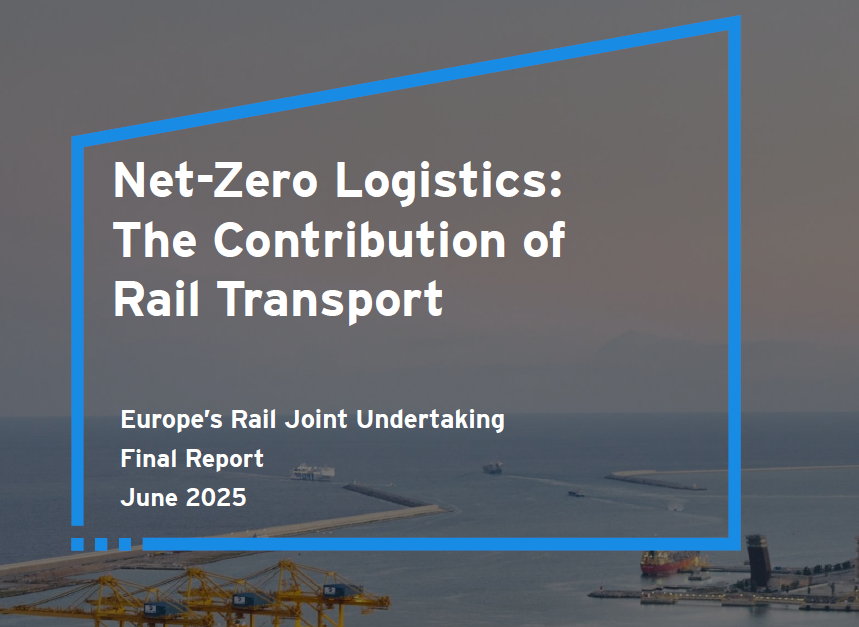Europe must take decisive steps to simplify and modernise its rail systems to strengthen competitiveness,...
Technical Specifications for the Design of Transition Zones
Description: This deliverable presents technical specifications for the design of railway transition zones, as part of the European In2Zone research project. The deliverable aims to define these technical specifications to help shape the development of future-looking transition zone remedial solutions, particularly those related to controlling permanent deformation. First, the remedial solutions for transition zones are presented, followed by the design principles and requirements for transitions, including RAMS and life-cycle requirements. Next, requirements for the track are presented covering rail sleepers. The continuous assessment of the performance of transition zones is discussed. Appendices are presented related to transition zone standards in select European countries and plastic sleepers.
Target audience: Rail Infrastructure Stakeholders
How it brings us closer to achieving better rail for Europe: IN2ZONE will design and test a prototype next generation transition zone solution that provides a step-change in track support conditions, thus reducing maintenance interventions. The new solution will be holistic, combining multiple advanced technologies to achieve an optimised whole system stiffness. One aspect of this holistic approach will be the design of new automatic irregularity, correcting sleepers, formed from synthetic material, with optimised geometry and stiffness for transition zones. They will use a new correction system to self-correct vertical track geometry irregularities/faults, meaning maintenance activities are less frequent. Further, as part of the holistic solution approach, the new sleeper technology will be combined with new advances in ballast stabilisation and soil improvement. This combined solution will result in an optimised whole system stiffness. In addition to the new design, an advanced resilience-based monitoring specification for transition zones will be developed. It will fuse datasets from multiple track sensors (e.g. smart ballast, sleepers, and geogrid) with vehicle sensors and satellite data. This will be achieved using edge computing and artificial intelligence, resulting in an Industry 4.0 approach for just-in-time maintenance.
More information on this topic: IN2ZONE
Cost-Benefit Analysis for On-Track Autonomous Multi-purpose Mobile Manipulator & Exoskeleton
Description: This deliverable presents technical specifications for the design of railway transition zones, as part of the European IN2ZONE research project. The deliverable aims to define these technical specifications to help shape the development of future-looking transition zone remedial solutions, particularly those related to controlling permanent deformation. First, the remedial solutions for transition zones are presented, followed by the design principles and requirements for transitions, including RAMS and life-cycle requirements. Next, requirements for the track are presented, covering rail sleepers. The continuous assessment of the performance of transition zones is discussed. Appendices are presented related to transition zone standards in select European countries and plastic sleepers.
Target audience: Rail Infrastructure Stakeholders
How it brings us closer to achieving better rail for Europe: The rail industry is facing important challenges as the average age of the workforce keeps growing while fewer young workers are interested in the physically demanding work required. Smart technologies can help to reduce work demands, avoid incidents and accidents, and support workers during heavy activities. The project, STREAM, supports the lean execution of intelligent maintenance processes by introducing technologies that cause negligible modification of current working procedures, yet strongly improve operation planning, safety, and performance. STREAM will deliver two methods to improve competitiveness in railway maintenance applications: (i) The development of new automated and smart working tools adapted to existing plants, together with autonomy enabling software functionality that uses robotics principles and Robot Operating System (ROS). This will introduce a level of autonomy and intelligence to OTMs. (ii) The deployment of a modular wearable exoskeleton to reduce the risk of injury by assisting workers in physically demanding activities. This will ultimately improve the worker’s operational efficacy, health, quality of life, safety, and dignity.
More information on this topic: STREAM
Detailed Proposal on Adhesion Related Standards
Description: The deliverable covers the contributions of all beneficiaries related to the PIVOT2 Subtask on adhesion related standards. The work on the one hand uses data from on-train measurements which were mostly planned, and partly also already realised in the related activities of the projects. The execution of the tests were finalised and the measured data was analysed. The focus of the measurements is made to highlight the behaviour of the trains at different wheel/rail adhesion conditions under the influence of multiple contaminants and to validate new adhesion management solutions. Where possible and useful, data from those other sub-subtasks within the project was transferred to this task to support the proposals on standards evolution. The work also covers discussions within the working group on wheel/rail adhesion related standards/regulations and their possible evolutions that might be necessary to operationally respect adhesion management solutions in order to support rail capacity increase.
Target audience: Rail Infrastructure and Rail Operator Stakeholders
How it brings us closer to achieving better rail for Europe: Within the objectives of PIVOT2, the development of innovative braking systems will contribute to improving performance, reliability, and punctuality, increasing capacity, and reducing life-cycle costs (LCC). PIVOT2 builds on the results of the work done in Roll2Rail, PINTA, PINTA2, CONNECTA as well as PIVOT. In relation to the proposals for standard changes, the situation varies depending on the topic. The deliverable touches upon the work done related to standards and proposals for standards evolution that is relevant for raising the benefits of wheel/rail adhesion solutions during operation, which could benefit better operations when considering the diverse wheel/rail adhesion conditions addressed. Part of the work was focussed on the changes that are necessary to positively influence ATO/ ETCS braking curves by use of brake/ adhesion management systems.
More information on this topic: PIVOT2
















